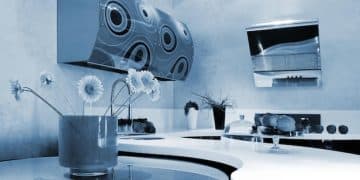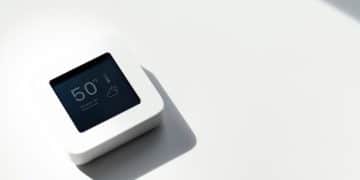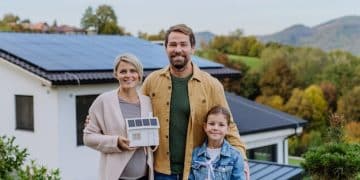Heat Pumps: Save Up to 30% on Energy Bills in 2025
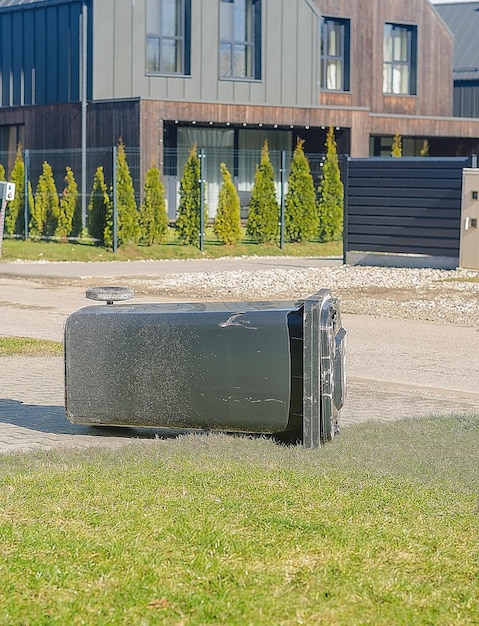
Shifting to a heat pump system in 2025 could significantly reduce your energy expenses, potentially saving homeowners up to 30% on utility bills through its superior energy efficiency and utilization of ambient heat as a primary energy source.
As the conversation around sustainable living grows, many homeowners are seeking tangible ways to reduce their environmental footprint while also realizing significant financial benefits. One technology at the forefront of this shift is the heat pump. But how can switching to a heat pump save you up to 30% on energy bills in 2025?
Understanding the Heat Pump Advantage: Beyond Traditional HVAC
Heat pumps represent a significant evolution in home climate control, moving beyond the traditional furnace and air conditioning duality. Unlike conventional systems that generate heat through combustion or convert electricity directly into heat, heat pumps primarily transfer heat. This fundamental difference is what underpins their remarkable efficiency and potential for substantial energy savings.
In essence, a heat pump doesn’t create heat; it moves it. During colder months, it extracts heat from ambient air, ground, or water and transfers it indoors. In warmer months, the cycle reverses, pulling heat from indoors and expelling it outside, effectively cooling your home. This process of heat transfer is inherently more energy-efficient than heat generation, as it requires less energy input to achieve the desired temperature.
The science behind heat transfer
The core principle behind heat pump operation is the refrigerant cycle. A working fluid, or refrigerant, circulates through a closed loop, undergoing phase changes (evaporation and condensation) to absorb and release heat. This cycle is driven by electricity, but the key is that a small amount of electrical energy is used to move a much larger amount of thermal energy. This ratio of useful heat output to energy input is known as the Coefficient of Performance (COP) for heating and the Energy Efficiency Ratio (EER) or Seasonal Energy Efficiency Ratio (SEER) for cooling.
- Evaporation: Refrigerant absorbs heat from the outdoor environment (even in cold conditions) and turns into a gas.
- Compression: The gaseous refrigerant is compressed, increasing its temperature and pressure.
- Condensation: The hot, high-pressure gas moves indoors, where it releases its heat to the indoor air or water as it condenses back into a liquid.
- Expansion: The liquid refrigerant then passes through an expansion valve, where its pressure and temperature drop, preparing it to absorb more heat and repeat the cycle.
This sophisticated dance of phase changes allows heat pumps to deliver comfortable indoor temperatures using a fraction of the energy consumed by traditional heating and cooling systems. The efficiency gains are particularly noticeable when compared to electric resistance heating, which has a COP of 1 (meaning 1 unit of electricity generates 1 unit of heat), while heat pumps can achieve COPs of 3 or higher, effectively delivering 3 or more units of heat for every 1 unit of electricity consumed.
Furthermore, because heat pumps perform both heating and cooling functions, they eliminate the need for separate systems, simplifying your HVAC setup and potentially reducing maintenance complexities. The ongoing advancements in refrigerant technology and compressor design continue to push the boundaries of their effectiveness, making them viable even in colder climates where they were once less appealing.
The Economics of Switching: Why 2025 is Your Year for Savings
The promise of saving up to 30% on energy bills by switching to a heat pump isn’t just a marketing claim; it’s a measurable outcome supported by evolving technology, government incentives, and a shifting energy landscape. 2025, in particular, stands out as a pivotal year for homeowners considering this transition, due to a confluence of factors that make the investment particularly attractive.
One primary driver for these savings is the inherent efficiency of heat pump systems. Unlike traditional furnaces, which convert fuel into heat at efficiencies that rarely exceed 95% (and often much less for older models), heat pumps can achieve efficiencies of 300% to 500% or more. This means for every unit of electricity they consume, they can move three to five times that amount of energy in the form of heat, leading to dramatically reduced energy consumption for the same heating and cooling output.
Government incentives and rebates
The push for sustainable energy solutions has led to a proliferation of financial incentives at federal, state, and local levels. The U.S. government, through legislation like the Inflation Reduction Act (IRA), has significantly bolstered tax credits and rebates for homeowners installing energy-efficient systems, including heat pumps.
- Federal Tax Credits: The IRA offers a 30% tax credit (up to $2,000) for eligible heat pumps installed after 2022. This credit is available annually, meaning you could claim it for multiple energy-efficient upgrades over time.
- State and Local Programs: Many states and municipalities offer additional incentives, ranging from direct rebates to low-interest loans. These can further reduce the upfront cost, making the investment more manageable.
- Utility Company Rebates: A growing number of utility companies provide rebates to customers who upgrade to high-efficiency heat pumps, recognizing that these systems reduce strain on the power grid.
These incentives are crucial because they directly address one of the primary barriers to heat pump adoption: the initial installation cost. While heat pumps may have a higher upfront price tag than conventional systems, these robust financial supports can significantly offset that difference, sometimes making the net cost competitive with less efficient alternatives.
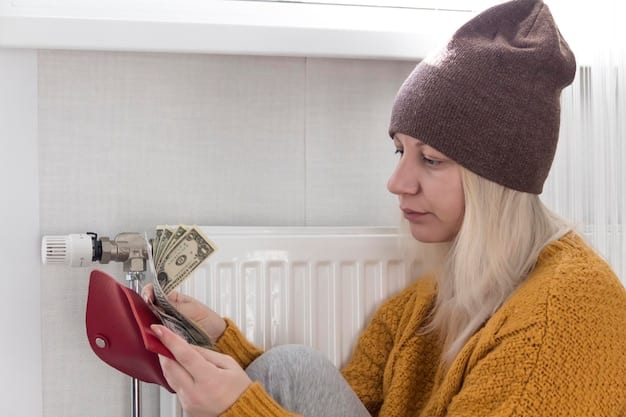
Moreover, as the technology matures and becomes more widespread, economies of scale are helping to bring down manufacturing and installation costs, further enhancing the financial viability of heat pump systems. The year 2025 is anticipated to see these factors converge, providing an optimal window for homeowners to benefit from both improved technology and robust financial assistance.
The long-term savings extend beyond just annual energy bills. Heat pumps typically have a longer lifespan than traditional HVAC systems, often 15-20 years or more with proper maintenance, reducing the frequency of replacement costs. Additionally, by reducing your reliance on fossil fuels, you become less susceptible to volatile energy prices, providing more predictable and stable utility expenses.
Beyond Savings: Environmental Impact and Home Comfort
While the financial benefits of switching to a heat pump are compelling, the advantages extend far beyond your wallet. The environmental impact and enhanced home comfort significantly contribute to the overall value proposition, aligning with the growing emphasis on sustainable living and improved quality of life.
From an environmental perspective, heat pumps are a cornerstone of decarbonization efforts in the residential sector. Unlike natural gas furnaces or oil boilers, heat pumps do not directly burn fossil fuels to generate heat. Instead, they transfer existing heat, leading to a dramatic reduction in greenhouse gas emissions attributable to home heating and cooling.
Reducing carbon footprint
The primary environmental benefit comes from the reduced reliance on fossil fuels. Even if the electricity powering the heat pump comes from a grid that still uses some fossil fuels, the efficiency of the heat pump means it consumes significantly less energy overall than a conventional system. As grids increasingly integrate renewable energy sources like solar and wind, the carbon footprint of heat pumps approaches zero, making them a truly green solution for home climate control.
- Lower Emissions: Eliminates direct on-site combustion of fossil fuels, significantly reducing CO2, NOx, and SOx emissions.
- Renewable Grid Synergy: As renewable energy penetration on the grid increases, heat pumps become even cleaner.
- Reduced Resource Consumption: By using ambient heat, rather than generating it from finite resources, heat pumps promote resource conservation.
This shift is critical in achieving climate goals and improving air quality, particularly in urban areas where residential emissions can contribute to localized pollution. By choosing a heat pump, homeowners play an active role in mitigating climate change and fostering a healthier planet.
Beyond environmental stewardship, heat pumps offer unparalleled home comfort. Traditional systems often lead to temperature fluctuations, with furnaces blasting hot air and then cycling off, resulting in uncomfortable swings. Heat pumps, however, operate differently.

Many modern heat pumps feature variable-speed compressors, allowing them to precisely modulate their output to meet the home’s heating or cooling needs. This results in a much more consistent and uniform temperature throughout your home, eliminating cold spots in winter and humid pockets in summer. The gentle, continuous operation also leads to quieter performance compared to the abrupt cycling of traditional units.
Furthermore, heat pumps also dehumidify the air as part of their cooling cycle, which can significantly improve indoor air quality and comfort, especially in humid climates. Some advanced models even incorporate integrated ventilation systems, further enhancing air circulation and freshness within the home. The comprehensive approach to climate control offered by heat pumps translates directly into a more comfortable, healthier, and quieter living environment, truly elevating the home experience.
Dispelling Myths: Heat Pumps in Cold Climates and Beyond
For many years, a common misconception was that heat pumps struggled in colder climates, specifically in regions with sustained freezing temperatures. This belief largely stemmed from early heat pump generations that indeed experienced decreased efficiency and performance when ambient temperatures dropped significantly. However, technological advancements have largely dispelled these myths, making modern heat pumps viable and highly efficient options even in the coldest parts of the United States.
The truth is, today’s advanced heat pumps, particularly “cold-climate” or “low-ambient” models, are engineered to perform exceptionally well even when temperatures dip well below freezing. These systems incorporate several innovations that enable them to extract heat from surprisingly cold air.
Innovations in cold-climate performance
One of the most significant advancements is the introduction of variable-speed compressors and enhanced vapor injection (EVI) technology. Traditional heat pumps would lose efficiency as temperatures dropped because the refrigerant struggled to absorb enough heat from the cold outdoor air. Variable-speed compressors, however, can adjust their operating speed to optimize refrigerant flow, maintaining higher efficiency across a wider range of temperatures. EVI further boosts performance by increasing the density of the refrigerant entering the compressor, allowing more heat to be transferred.
- Advanced Refrigerants: Newer refrigerants are designed to evaporate at lower temperatures, making heat extraction from colder air more efficient.
- Improved Defrost Cycles: Modern heat pumps have intelligent defrosting capabilities that prevent ice buildup on outdoor coils without significant heat loss indoors.
- Supplemental Heating: While designed for primary heating, many cold-climate heat pumps can be paired with a small auxiliary electric resistance heater for extreme cold snaps, ensuring continuous comfort. This backup is rarely engaged for extended periods, preserving the primary energy savings.
The U.S. Department of Energy, through initiatives like the Cold Climate Heat Pump Technology Challenge, continues to push research and development, resulting in heat pumps that can maintain high efficiency at temperatures as low as -13°F (-25°C) and still provide some heat at even lower temperatures. This performance makes them suitable for homes from Maine to Minnesota, effectively covering a vast majority of the U.S. landmass.
Another myth revolves around installation complexity. While installing a heat pump does require professional expertise, it’s not inherently more complex than installing a traditional HVAC system. Many heat pumps can even leverage existing ductwork, particularly for central systems, minimizing disruption and additional costs. For homes without ductwork, ductless mini-split heat pumps offer a flexible and efficient solution, providing targeted heating and cooling zones.
Finally, some may be concerned about noise levels. Older heat pumps indeed could be noisy, but contemporary models are designed with quiet operation in mind. Advances in fan blade design, compressor enclosures, and vibration damping materials have made modern heat pumps remarkably quiet, often quieter than traditional air conditioning units. These improvements ensure that the comfort benefits come without the drawback of excessive noise.
Choosing the Right Heat Pump: A Guide for Homeowners
Selecting the ideal heat pump for your home is a critical step in maximizing energy savings and comfort. The market offers a variety of heat pump types, each suited to different home configurations, climates, and budgets. Understanding these options and consulting with qualified professionals will ensure you make an informed decision for 2025 and beyond.
The primary types of heat pumps available are air-source, ground-source (geothermal), and water-source. Each utilizes a different medium to exchange heat, influencing their efficiency, installation requirements, and cost.
Types of heat pumps and their suitability
Air-Source Heat Pumps: These are the most common and generally the most affordable to install. They extract heat from the outdoor air in winter and expel it there in summer. Air-source heat pumps can be central (ducted) or ductless (mini-splits), offering flexibility for various home layouts. They are suitable for most climates, especially with modern cold-climate models.
- Pros: Lower upfront cost, relatively easy installation, versatile (central or mini-split options).
- Cons: Efficiency can slightly decrease in extremely cold temperatures (though modern models mitigate this), outdoor unit visible.
Ground-Source (Geothermal) Heat Pumps: These systems leverage the stable temperature of the earth a few feet below the surface. A loop system of pipes is buried underground, through which a fluid circulates to exchange heat with the earth. Geothermal systems are exceptionally efficient and provide consistent performance regardless of outdoor air temperature, but they have a higher installation cost due to the excavation required.
- Pros: Highest efficiency, lowest operating costs, longest lifespan, quiet operation, hidden installation.
- Cons: Highest upfront cost, significant excavation required, installation complexity.
Water-Source Heat Pumps: Similar to geothermal, these systems exchange heat with a nearby body of water (like a pond or well) via a submerged loop. Their feasibility depends entirely on access to an appropriate water source. They offer high efficiencyakin to geothermal systems where applicable.
Beyond the type, consider the size of the heat pump. An undersized unit will struggle to heat or cool your home effectively and may run constantly, while an oversized unit will short-cycle, leading to inefficiencies and increased wear and tear. A qualified HVAC professional will perform a load calculation (e.g., using Manual J) to determine the appropriate size based on your home’s square footage, insulation, window quality, and climate.
Look for units with high efficiency ratings: a high Seasonal Energy Efficiency Ratio (SEER2) and Heating Seasonal Performance Factor (HSPF2), with higher numbers indicating better efficiency. For geothermal, compare Energy Efficiency Ratio (EER) and Coefficient of Performance (COP). Also, consider features like variable-speed compressors, smart thermostat compatibility, and noise levels. Researching specific brands known for reliability and customer service is also advisable.
Finally, obtain multiple quotes from certified and reputable HVAC installers. Ensure they are experienced with heat pump installations and can provide references. A professional installation is paramount to achieving the promised energy savings and ensuring the longevity of your system, solidifying the choice for sustainable home comfort.
Installation and Maintenance: Ensuring Lasting Savings and Performance
The journey to significant energy savings with a heat pump system doesn’t end with choosing the right unit; proper installation and diligent maintenance are equally crucial. These two factors directly influence the system’s efficiency, longevity, and ultimately, the extent of your energy bill reductions. A poorly installed or neglected heat pump will underperform, negating much of its inherent efficiency advantages.
Professional installation is paramount. Heat pump systems are complex, involving refrigeration cycles, electrical connections, and often integration with existing ductwork or new piping. Mistakes in sizing, refrigerant charge, duct sealing, or electrical wiring can severely impact efficiency and even lead to system failure. Certified HVAC technicians possess the specialized knowledge and tools to correctly size, install, and commission the system according to manufacturer specifications and local building codes.
Key aspects of professional installation
A reputable installer will conduct a thorough home assessment, including a heat load calculation, to ensure the chosen heat pump is perfectly matched to your home’s specific needs. They will also inspect your existing ductwork for leaks and proper sizing if you’re installing a central system, recommending necessary repairs or improvements to maximize airflow and minimize energy loss. For ductless mini-splits, they will advise on optimal indoor unit placement for effective heating and cooling distribution.
- Proper Sizing: Incorrect sizing leads to inefficient operation and reduced lifespan.
- Refrigerant Charge: An incorrect refrigerant charge can reduce efficiency by 5-20% and damage the compressor.
- Ductwork Integrity: Leaky or undersized ducts can dissipate treated air, wasting energy.
- Electrical Compatibility: Ensuring proper wiring and circuit capacity for safe and efficient operation.
Once installed, regular maintenance becomes the cornerstone of sustained performance and savings. Think of your heat pump like a vehicle; without routine tune-ups, its efficiency will degrade over time, its lifespan will shorten, and it will be more prone to breakdowns. A well-maintained heat pump maintains its high Coefficient of Performance (COP) and Seasonal Energy Efficiency Ratio (SEER), keeping your energy bills consistently low.
Annual professional tune-ups are highly recommended. During these visits, technicians will clean coils, check refrigerant levels, inspect electrical components, lubricate moving parts, and ensure proper airflow. They can identify and address minor issues before they escalate into costly repairs. Between professional visits, homeowners can perform simple tasks to contribute to their system’s efficiency.
Routinely change or clean air filters according to manufacturer guidelines, typically every 1-3 months. A clogged filter restricts airflow, forcing the system to work harder and consume more energy. Keep the outdoor unit free from debris, such as leaves, grass clippings, and snow, to ensure proper airflow to the coils. Also, verify that outdoor vegetation is trimmed back to maintain adequate clearance around the unit. By investing in professional installation and committing to regular maintenance, homeowners can ensure their heat pump provides reliable, efficient, and long-lasting energy savings, truly making 2025 a year of smart home upgrades.
Real-World Impact: Case Studies and Future Outlook
The theoretical promise of heat pump savings becomes tangible when examining real-world applications and projections for the future. Across the United States, homeowners are already experiencing significant reductions in energy bills and enhanced home comfort after switching to heat pump systems. These success stories provide compelling evidence for the technology’s effectiveness and practicality.
Consider a typical single-family home in Massachusetts that converted from an oil furnace to an air-source heat pump. Reports from the homeowner indicate annual heating costs dropped by over 40%, even after accounting for the electricity consumed by the heat pump. Additionally, they gained efficient air conditioning, eliminating the need for separate window units and further reducing their overall energy expenditure. The initial investment was significantly offset by state and federal rebates, making the payback period relatively short and the long-term savings substantial.
Examples of heat pump success
In a cooler climate like Colorado, a family installed a geothermal heat pump system. Despite the higher upfront cost, their utility bills plummeted, with heating and cooling costs combined being less than their previous heating-only expenses. The consistent indoor temperature and quiet operation were noted as significant improvements to their quality of life. The stable ground temperature provided superior efficiency compared to air-source units in extreme cold, validating the long-term investment.
Even in a moderate climate like California, where cooling needs are prominent, heat pumps prove beneficial. A homeowner in the Central Valley replaced an aging HVAC system with an inverter-driven heat pump. They saw a 25% reduction in their total electricity bill, primarily due to the heat pump’s ability to precisely modulate output during cooling cycles, avoiding energy-wasting on/off cycles. The integrated heating function also provided efficient warmth during cooler evenings, completing their home comfort solution.
These varied case studies underscore that the “up to 30% savings” is not an exaggeration but a realistic outcome achievable across diverse climates and home types, provided proper sizing, installation, and maintenance are in place. The exact percentage depends on previous energy source, local electricity rates, climate, home insulation, and specific heat pump model.
Looking ahead to 2025 and beyond, the outlook for heat pump adoption is exceptionally strong. Government policies and incentives are expected to continue supporting energy-efficient upgrades, potentially expanding their scope and duration. Continued research and development in refrigerant technology, compressor design, and smart controls will further enhance efficiency, reduce costs, and broaden the applicability of heat pumps to even more challenging environments.
As the electric grid becomes cleaner with increasing renewable energy integration, the environmental benefits of heat pumps will also intensify, making them an even more powerful tool in the fight against climate change. The future of home heating and cooling undeniably points towards the widespread adoption of heat pump technology, solidifying its role as a cornerstone of sustainable and cost-effective living.
| Key Benefit | Brief Description |
|---|---|
| 💰 Energy Savings | Potentially save up to 30% on combined heating and cooling bills due to superior efficiency. |
| 🌱 Environmental Impact | Significantly reduces carbon footprint by not burning fossil fuels on-site. |
| 🏡 Enhanced Comfort | Provides consistent temperatures, better dehumidification, and quiet operation for year-round comfort. |
| 🛠️ Incentives & Longevity | Benefit from federal & state incentives, plus a longer lifespan than traditional HVAC systems. |
Frequently Asked Questions
▼
Modern “cold-climate” heat pumps are specifically designed to operate efficiently even in temperatures well below freezing, some performing effectively down to -13°F (-25°C). Advances in compressor technology and refrigerants have significantly improved their performance, making them suitable for most U.S. regions, often with minimal reliance on supplemental heat.
▼
Generally, the upfront installation cost of a heat pump can be higher than a traditional furnace and AC unit. However, substantial federal tax credits (like the 30% credit up to $2,000 from the IRA) and various state/local rebates can significantly offset this initial investment, making the net cost competitive or even lower in many cases, especially considering long-term savings.
▼
For optimal performance and energy efficiency, a heat pump should receive professional maintenance at least once a year, ideally in the spring for cooling checks and in the fall for heating checks. Homeowners should also regularly change or clean air filters (every 1-3 months) and keep the outdoor unit clear of debris to ensure proper airflow.
▼
Absolutely. Heat pumps are designed to provide year-round climate control. In winter, they extract heat from outside and move it indoors for heating. In summer, the process reverses, pulling heat from indoors and expelling it outside for cooling. This dual functionality is one of their primary advantages, eliminating the need for separate furnace and air conditioning units.
▼
Switching to a heat pump significantly reduces your carbon footprint. Unlike traditional systems that burn fossil fuels, heat pumps transfer heat, leading to lower greenhouse gas emissions. As renewable energy sources increasingly power the electricity grid, the environmental benefits of heat pumps become even more pronounced, contributing to cleaner air and a more sustainable future.
Conclusion
The convergence of advanced technology, compelling financial incentives, and growing environmental awareness positions 2025 as a prime year for homeowners to consider the transformative switch to a heat pump. The potential to save up to 30% on energy bills is not merely an aspirational figure but a quantifiable outcome driven by the inherent efficiency of these systems and robust government support. Beyond the significant financial relief, heat pumps offer a path to a reduced carbon footprint and enhanced home comfort, providing consistent temperatures and improved indoor air quality. By dispelling old myths and investing in professional installation and routine maintenance, homeowners can unlock the full spectrum of benefits a heat pump provides, making it a cornerstone investment for a more sustainable, comfortable, and economically sensible future.

